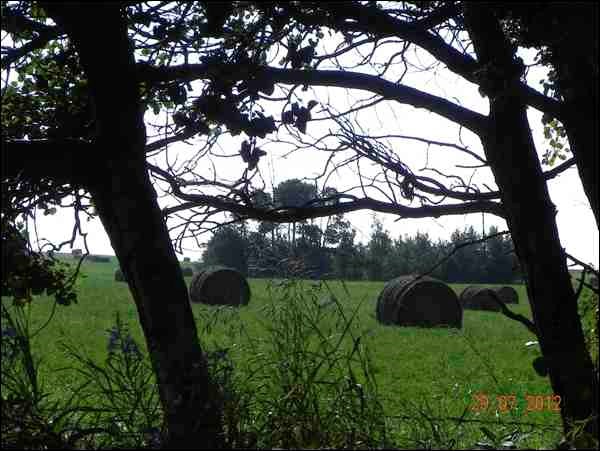Producing high quality baled silage is the result of an understanding of the ensiling process, sound planning, proper selection of crops and following good management practices. Baled silage allows the use of regular baling and feeding equipment. In many cases feed quality is improved and field losses are reduced (compared to haying systems).
Making quality silage can be compared to making good wine. Both processes depend on fermentation to create a product that will store over a long period of time. In wine, the process of fermentation produces alcohol. In silage, fermentation in the absence of oxygen produces various acids which lower the pH and preserves the silage.
Key factors in producing quality silage are the proper moisture content of the cut forage and the elimination of oxygen during the ensiling process. Ideally, cereal crops should be harvested by the time the crop reaches 65 per cent to 70 per cent moisture content. This normally occurs about two to three weeks after heading in cereal crops (early dough stage). Allow the cut crop to wilt in the field until the moisture content is reduced to 40 per cent to 55 per cent moisture. This may take 12 to 24 hours depending on drying conditions. Baling and wrapping silage at higher moisture levels (60 per cent to 65 per cent) may lead to freezing problems in very cold conditions. If baled silage is made at lower moisture levels (less than 40 per cent), the ensiling process may not complete. In the absence of oxygen, the low moisture bales will usually store as wet hay with little or no moulding or deterioration. Plan on feeding those bales first.
Higher moisture contents also create bales that may be too heavy for baling and hauling equipment. A 6 foot diameter round bale at 20 per cent moisture content weighs about 1,250 lbs. The same bale at 55 per cent moisture content weighs over 2,200 lbs.
Use a baler that produces a "high density bale" and ensure that the bales are wrapped or sealed in plastic within four to five hours of baling. This limits the amount of oxygen in the bale, produces a faster rate of fermentation and reduces the amount of mold growth. Plastic twine is preferred over sisal twine as oils in the sisal may degrade the plastic wrap over time. It generally takes two to three weeks for the ensiling process to complete.
Baled silage will keep for several years as long as no oxygen is allowed back into the ensiled material. Ensure that holes and tears in the plastic are repaired as quickly as possible. Experience has shown that stacks should be positioned in a north - south direction. Placing the stacks in an east - west direction allows the sun to warm the south facing side of the row causing moisture to migrate to the north side of the row or stack. Rodents will be attracted to the warm south facing side.
It pays to have a feed analysis performed on the baled silage prior to feeding. This allows for accurate ration formulation, reducing feeding costs and improving nutritional performance. Keep an eye out for the presence of ergot in cereal silages. There are documented cases of ergot poisoning using ergot contaminated silage and greenfeed. Producers will soon have a new feed analysis service available in Saskatchewan that measures the six key ergot alkaloids. The tests will measure the alkaloid activity which can be used to make feeding recommendations. Talk to your regional Livestock Specialist for additional information.
For more information on this, or other forage related topics, contact Bryan Doig at 306-446-7477 or the Agriculture Knowledge Centre at 1-866-457-2377.
- Doig is Regional Provincial Feeds/Regional Forage Specialist, North Battlefor Regional Services Branch

.png;w=120;h=80;mode=crop)

.png;w=120;h=80;mode=crop)
